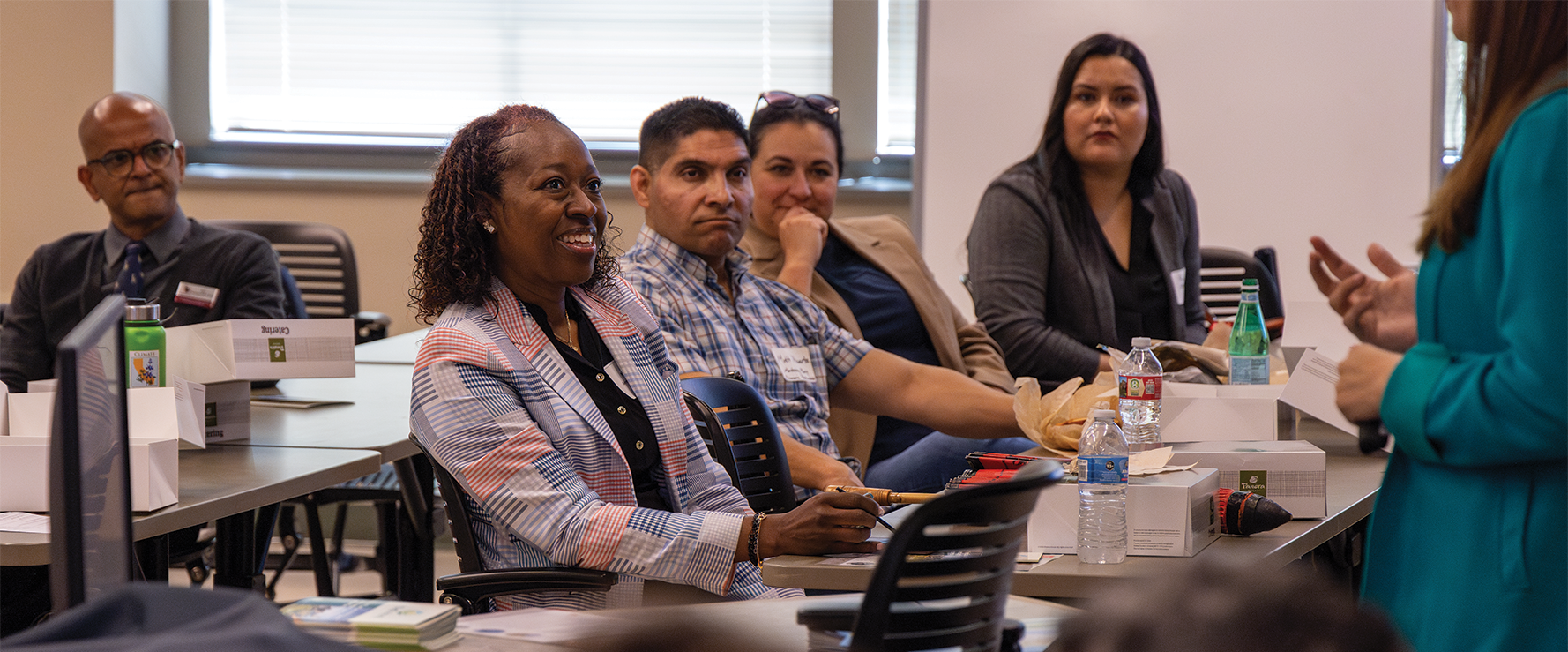California agriculture and its workforce are changing, and we need to work together to stay in front of it. This was the theme of our VINE Connect Meeting in Monterey County. Held at Hartnell College in Salinas, the event brought together a vibrant group of industry professionals, educators, and innovators to explore the evolving needs of the agricultural workforce.
Opening Remarks and Networking
The event kicked off with a networking session following the opening remarks by Gabe Youtsey, Chief Innovation Officer at UCANR. Youtsey provided context for the event and introduced the efforts of UCANR and The VINE in supporting the industry. Attendees had the opportunity to engage in meaningful conversations with industry leaders and peers. This session was not just about exchanging business cards but about building relationships and finding common ground.
Addressing Workforce Challenges: F3 AgTEC Workforce Initiative
Karen Aceves from the F3 AgTEC Workforce initiative delivered a compelling presentation focused on addressing workforce challenges in agriculture. She emphasized the necessity of transitioning the economy to support those at risk of automation, highlighting the unsustainability of the current model. Aceves stated, “One out of three workers is at risk of automation, and the lifespan of a farm worker is only 50 years. It is unsustainable to continue as we are, and we know that if we are going to transition the economy, those at risk of automation need to be first in line for the new jobs.”
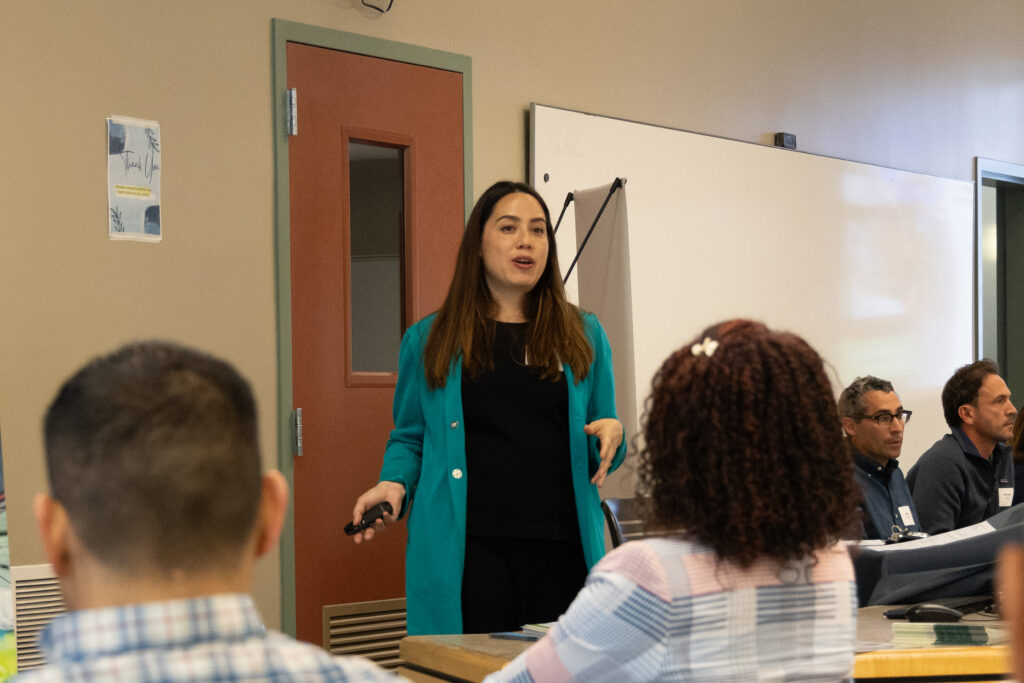
Aceves discussed the shift towards competency-based education to better serve farm workers, recognizing their practical knowledge despite limited formal education. She explained, “We needed to honor the knowledge they already possessed. Many farm workers could teach classes on irrigation or other agricultural topics, but they might struggle with digital literacy.” This approach ensures workers demonstrate mastery of necessary skills, focusing on practical applications such as digital literacy and applied technical writing. By emphasizing competency over traditional time-bound learning, the initiative aims to provide workers with skills directly relevant to the industry’s needs.
Additionally, Aceves pointed out the need to separate learning from our systems, stating, “Traditionally, we assign arbitrary time values to learning, such as saying you’ll learn everything about Intro to Psychology in an eight-week session. But do you really know it?” This insight led to the development of a certificate program offering flexible, skills-based education that accommodates varied schedules and existing knowledge of farm workers. The program, available in Spanish and English, consists of twelve units covering fourteen competencies, including digital literacy, applied technical writing, and ag systems fundamentals. Supported by industry collaboration, the program will train 8,400 workers, enhancing the agricultural workforce’s resilience and adaptability.
Grower and Startup Panel
The main event was a panel discussion moderated by Gabe Youtsey and featuring Matthew Hoffman, Plant Health Technology Lead at Driscoll’s, Jennifer Clarke, Executive Director of the California Leafy Greens Research Board, Brendan Dowdle, Co-CEO of Farm-ng, and Laura Penera, Human Resources Director at Braga Fresh Family Farms. The topic of the panel was current and future workforce needs, and the conversation revolved around key themes of technology adoption, labor challenges, and the perception of agricultural work.
Technology and Labor Efficiency
The panel emphasized the critical role of technology in addressing labor shortages and improving efficiency in agricultural operations. Brendan Dowdle underscored the growing difficulty that growers face in maintaining food quality and productivity due to escalating labor costs. He explained that labor costs have increased three to four times over the past several decades, while the price of produce has remained relatively flat. Dowdle highlighted how robotics and AI can significantly reduce the labor burden, transforming an eight-person job into a one-person job, thus allowing other workers to focus on areas of the farm that need improvement. This reshuffling of labor from manual, backbreaking tasks to higher value-added contributions is crucial for the sustainability of the agricultural industry.
Matt Hoffman also touched on the importance of technology adoption, emphasizing that reducing the risk for growers to adopt new technologies is essential. Hoffman pointed out, “A big part of our job is reducing the risk for growers to adopt new technologies, especially those focused on labor efficiency or automation.” He highlighted the need for solutions that improve non-harvest labor activities, which are often overlooked but essential for overall farm efficiency. Both Dowdle and Hoffman agreed that technology plays an important role in not only making agricultural work more efficient but also in making it more attractive to the next generation of workers.

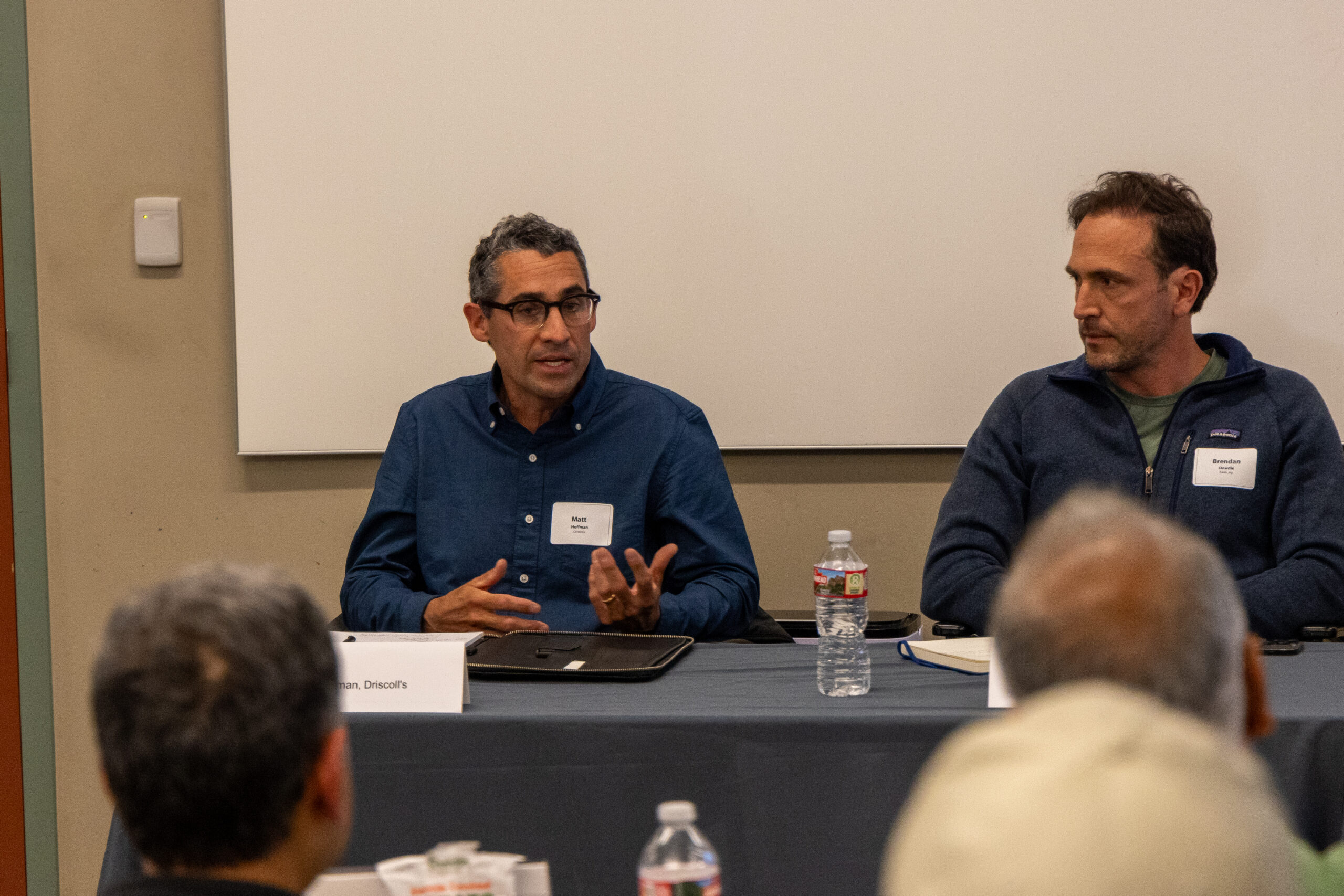
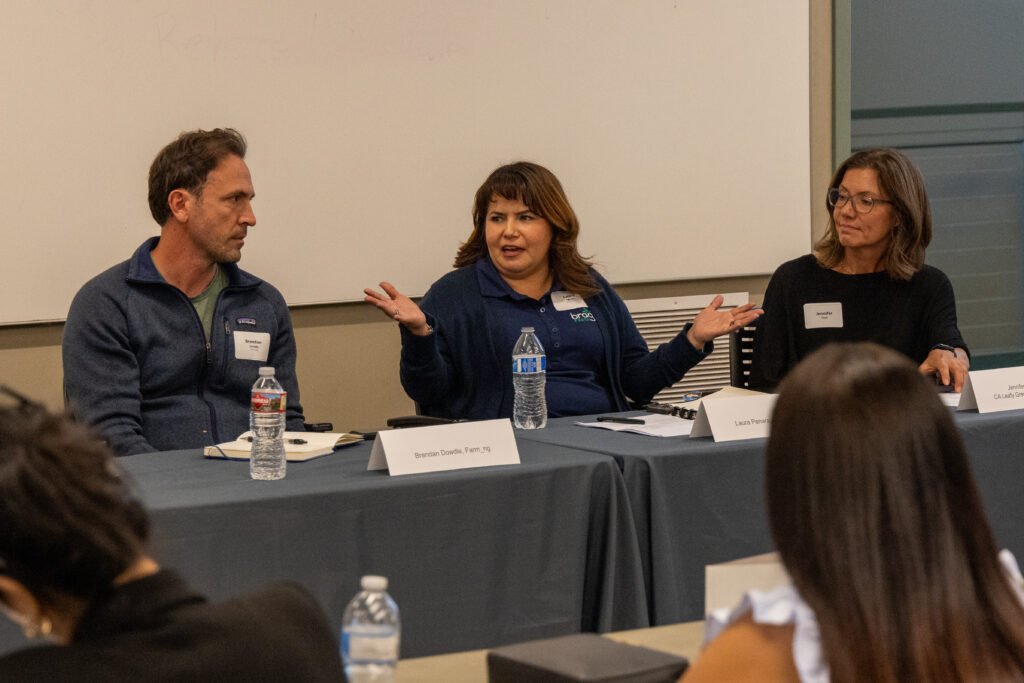
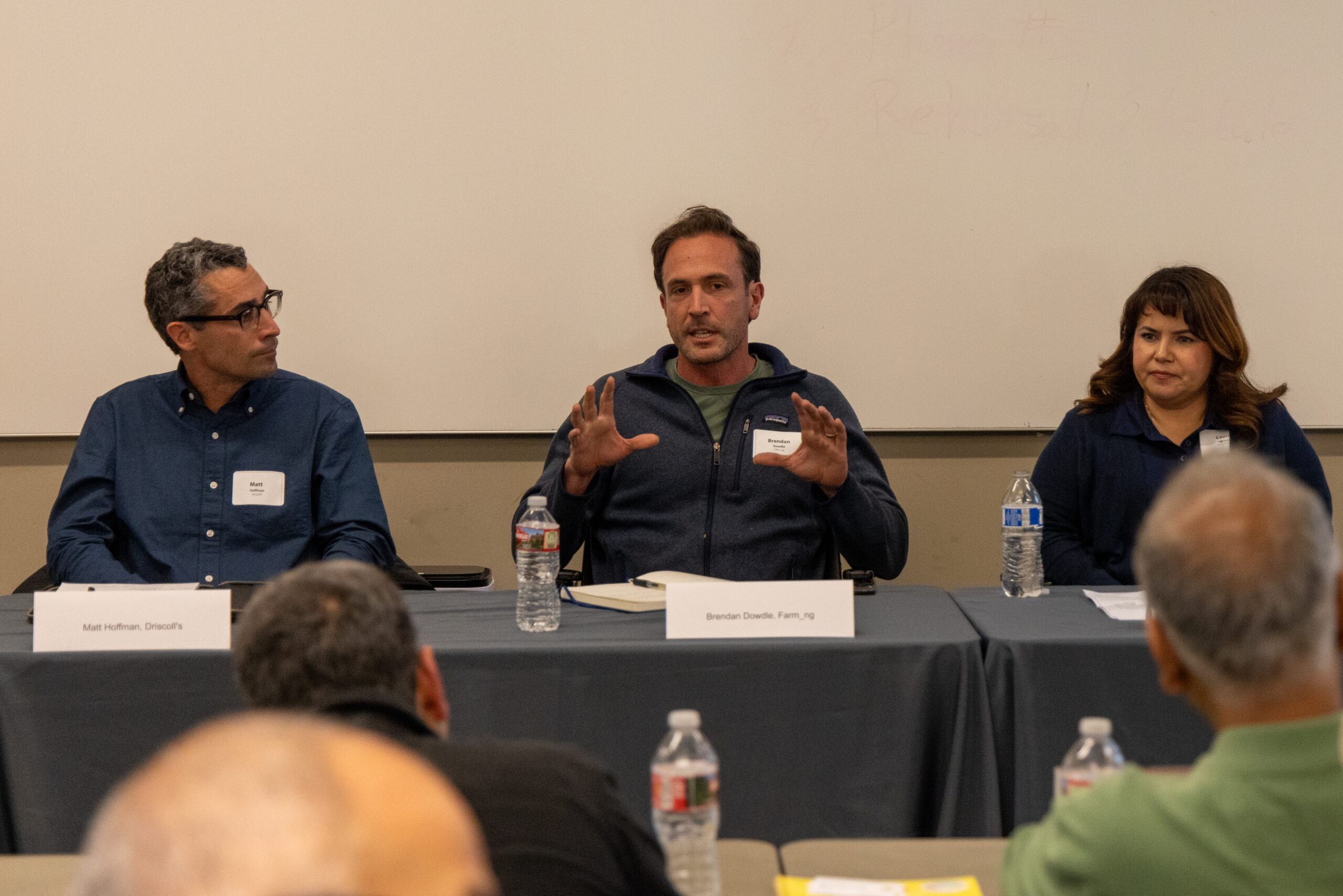
Bridging the Gap Between Tech and Ag
Jennifer Clarke highlighted a significant challenge in the agricultural industry: the need for employees who can bridge the language gap between technology and agriculture. She explained that while tech companies often develop innovative solutions for the agricultural sector, the terminology and concepts used can be confusing for growers. “We need employees who understand both worlds,” she emphasized. Clark advocated for a certificate program that provides an overarching understanding of agricultural practices while teaching the technical language necessary to implement new technologies effectively. This dual knowledge would facilitate better communication and collaboration between tech companies and growers, ensuring that technological solutions are practical and widely adopted.
Building on Clarke’s points, Laura Panera emphasized the importance of training on soft skills alongside technical skills. She noted that effective communication and the ability to bridge gaps between different stakeholders are crucial. Panera observed, “Whether it’s current workforce members being upskilled or new students entering the field, it’s important to give them both ag and tech language skills.” Matt Hoffman also supported this view, stating that understanding both the technological and agricultural aspects is essential for effective technology adoption. He shared an example from Driscoll’s where they scouted for startups with solutions for labor efficiency, water efficiency, and pest and disease management, emphasizing the need for people who can vet these technologies and communicate their benefits to growers.
Changing Perceptions of Agricultural Work
Laura Panera discussed the significant stigma surrounding agricultural work, particularly within her community. She shared her personal experience as a Latina growing up in Monterey County, where there was a strong stigma against working in agriculture. “When I told my grandparents I got a job with a farm labor contractor, they were shocked and concerned,” Panera recalled. She emphasized the need to change this perception, highlighting the numerous opportunities available in agriculture. She also highlighted Braga Fresh’s commitment to regenerative agriculture and its ambitious goal of becoming carbon neutral by 2025. This focus on sustainability and environmental stewardship is not only beneficial for the planet but also helps to attract workers who are motivated by these values.
Brendan Dowdle also addressed the perception of agricultural work, explaining that introducing robotics can make farm work less physically demanding and more engaging, thereby attracting new talent to the industry. He mentioned, “The perception that farm work is backbreaking and laborious discourages people from pursuing it, but introducing robotics platforms can change that.” Jennifer Clarke added that young people today are looking for meaningful work, and agriculture offers the opportunity to be part of a system that feeds the nation and the world. “Younger people today want to have a purpose and be part of something meaningful. There’s no better industry than agriculture for that,” she stated. By changing the narrative around agricultural work and showcasing its importance and potential for impact, the industry can attract a new generation of passionate and dedicated workers.
Matt Hoffman also highlighted the role of technology in making agriculture more appealing, noting that innovations like UVC light to control powdery mildew can transform the industry and attract those interested in cutting-edge technology. Hoffman’s perspective reflects the broader sentiment of the panel: while there are challenges to overcome, the future of agriculture is filled with opportunities for innovation, collaboration, and meaningful impact.
Key Takeaways
Reflecting on the discussions and insights shared during the event, here are the key takeaways that underscore the evolving landscape of the agricultural workforce:
- Collaboration is Key: Effective partnerships among industry professionals, educators, and innovators are essential to meet the changing needs of the agricultural workforce.
- Flexible Education Models: Transitioning to competency-based education can better serve workers by recognizing their existing skills and providing relevant, flexible training.
- Embracing Technology: The adoption of robotics and AI is crucial for addressing labor challenges, improving efficiency, and making agricultural work more appealing.
- Connecting Technology and Agriculture: It’s important to bridge the gap between technology and agriculture to ensure practical and effective use of new innovations.
- Changing Perceptions: Shifting the perception of agricultural work to highlight its sustainability, technological advancements, and meaningful impact can attract new talent to the industry.
Photo Gallery

To see highlights from the VINE Connect Monterey County, check out the pictures on our Flickr account.

